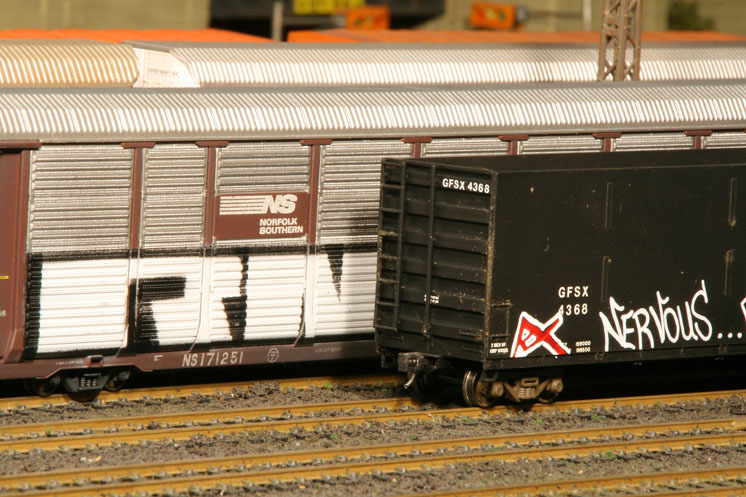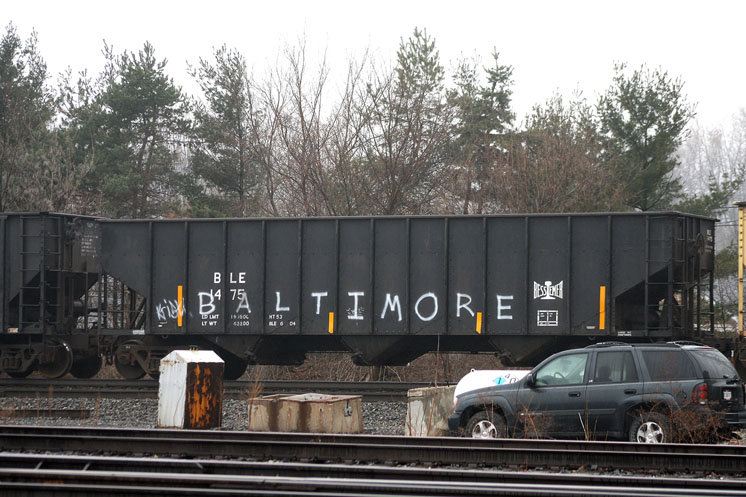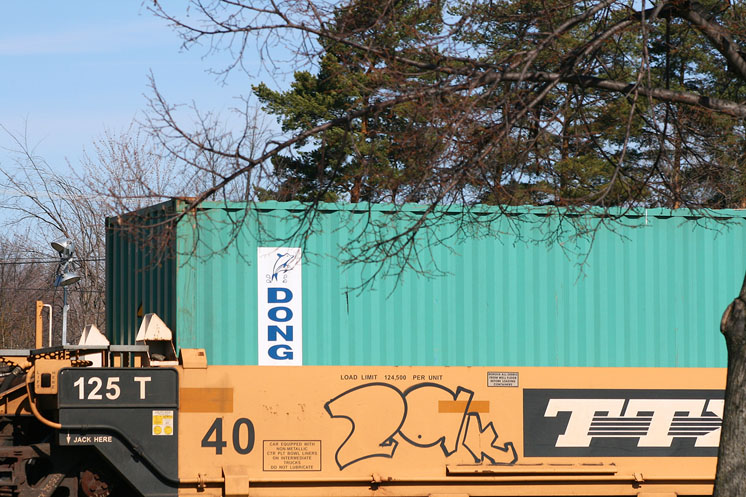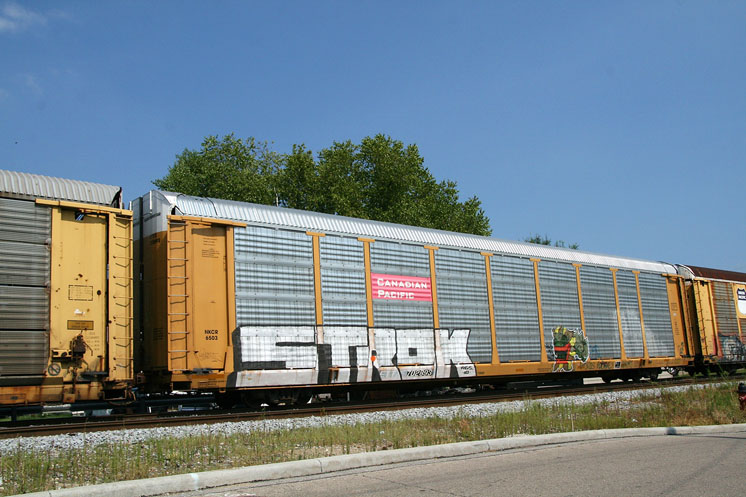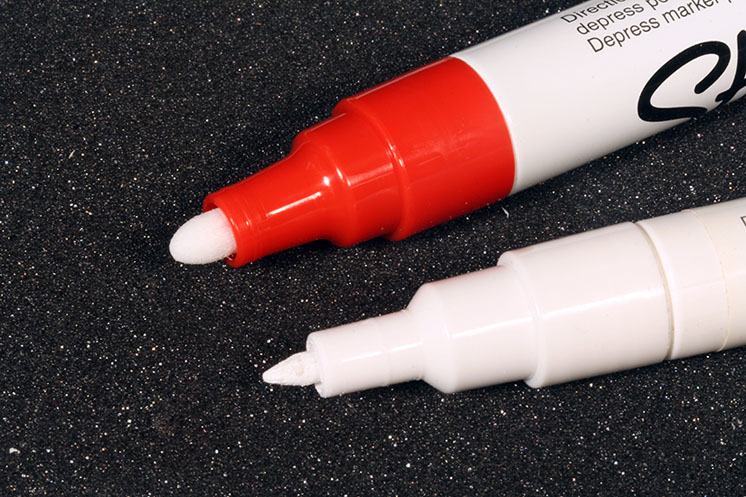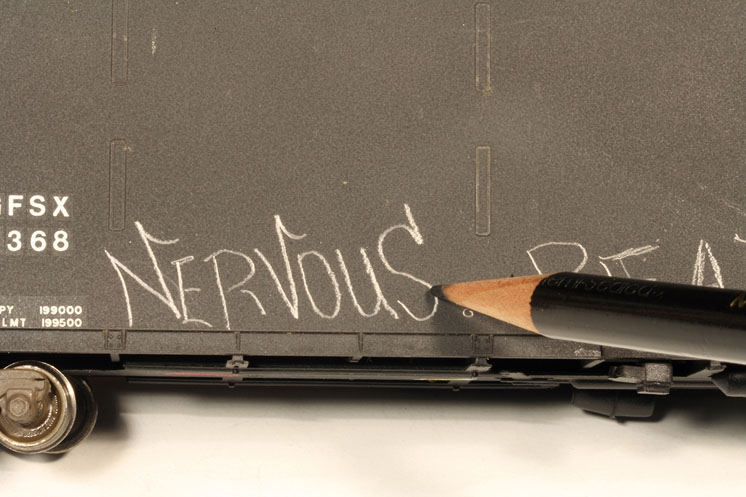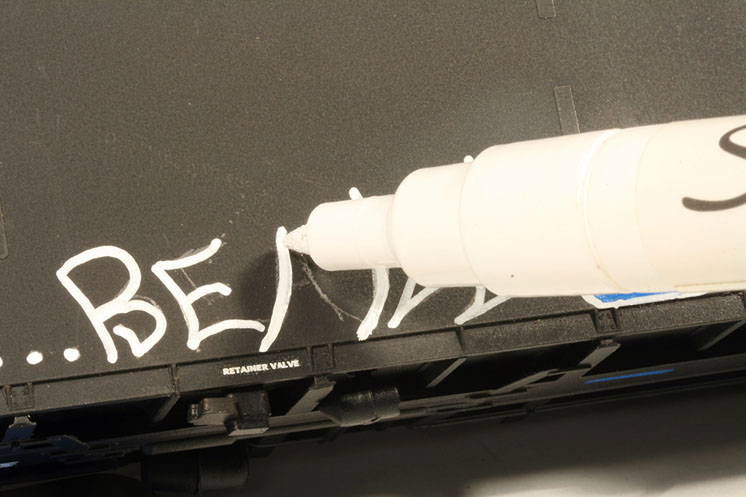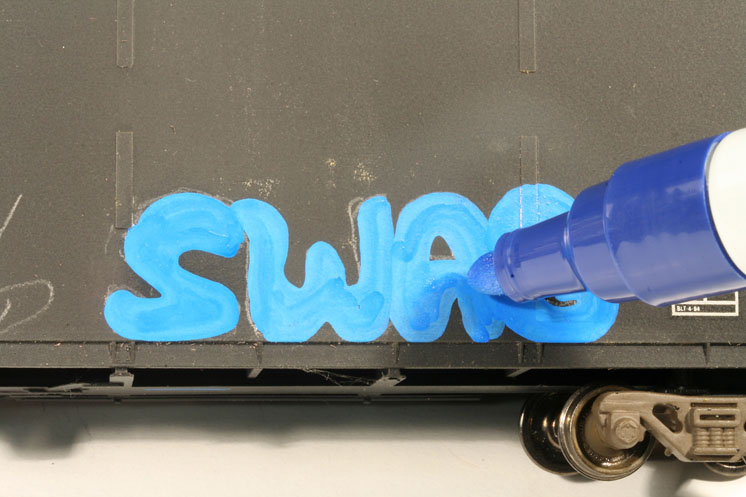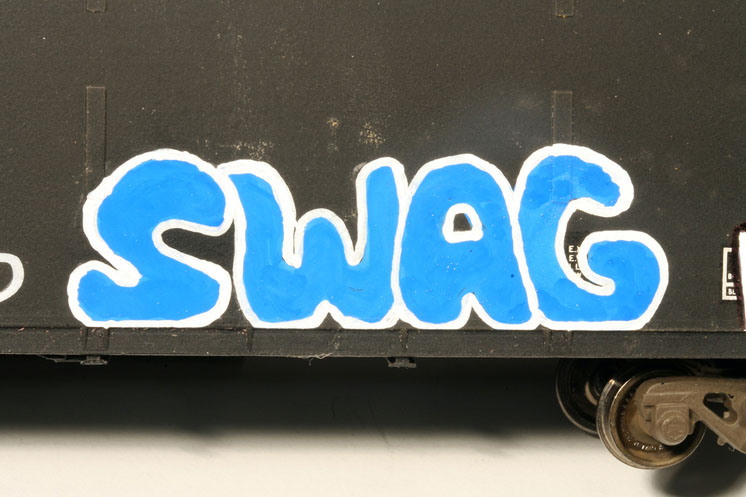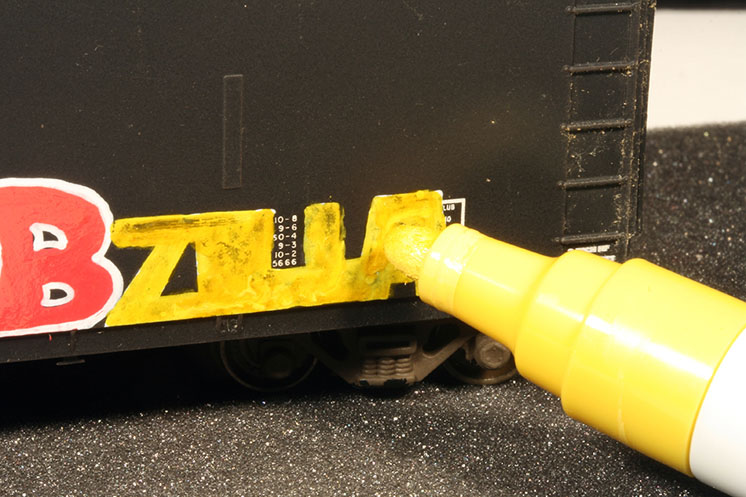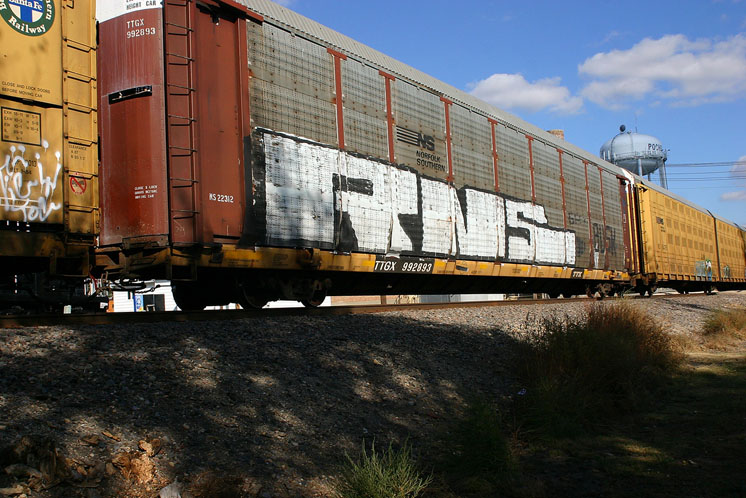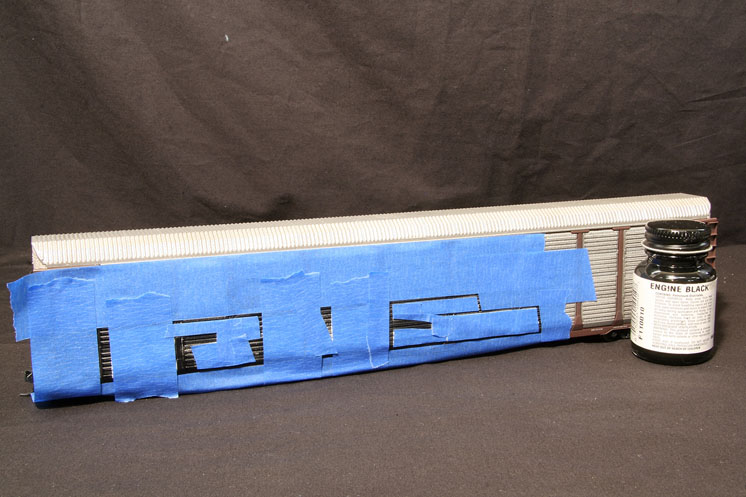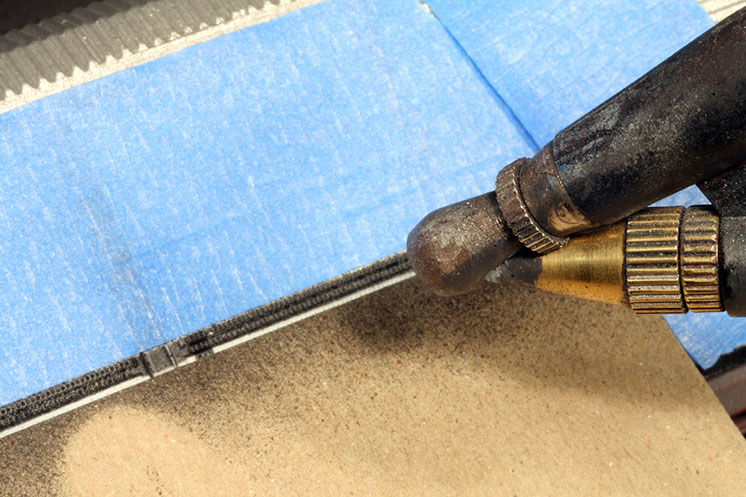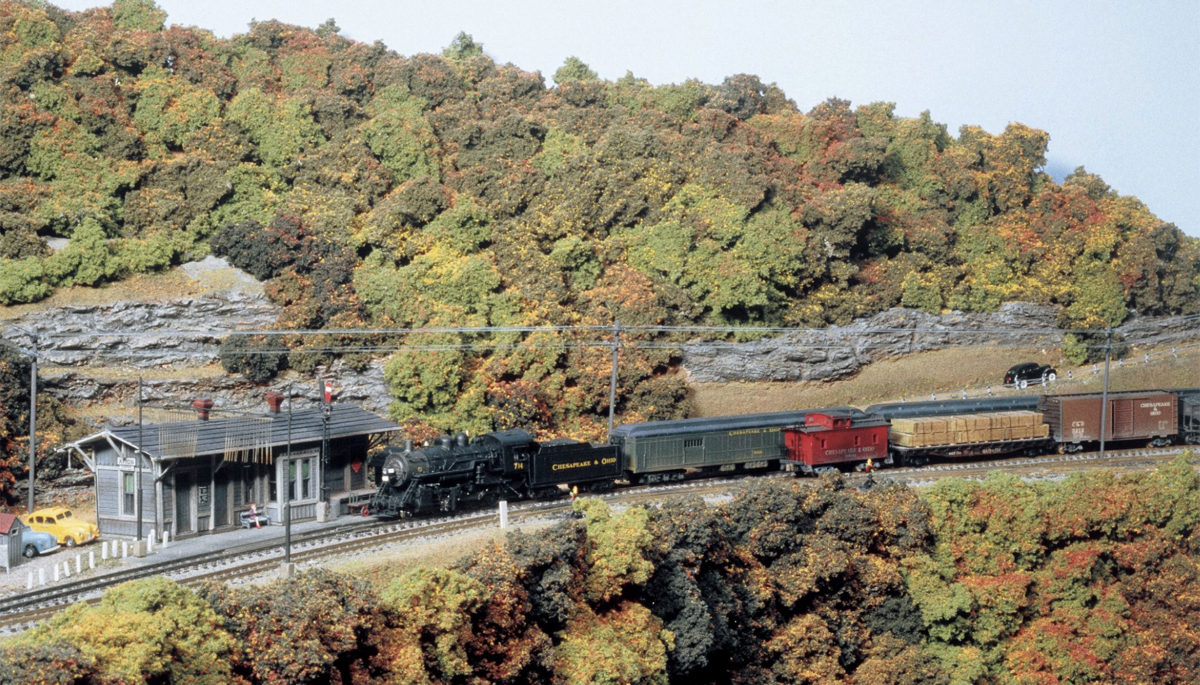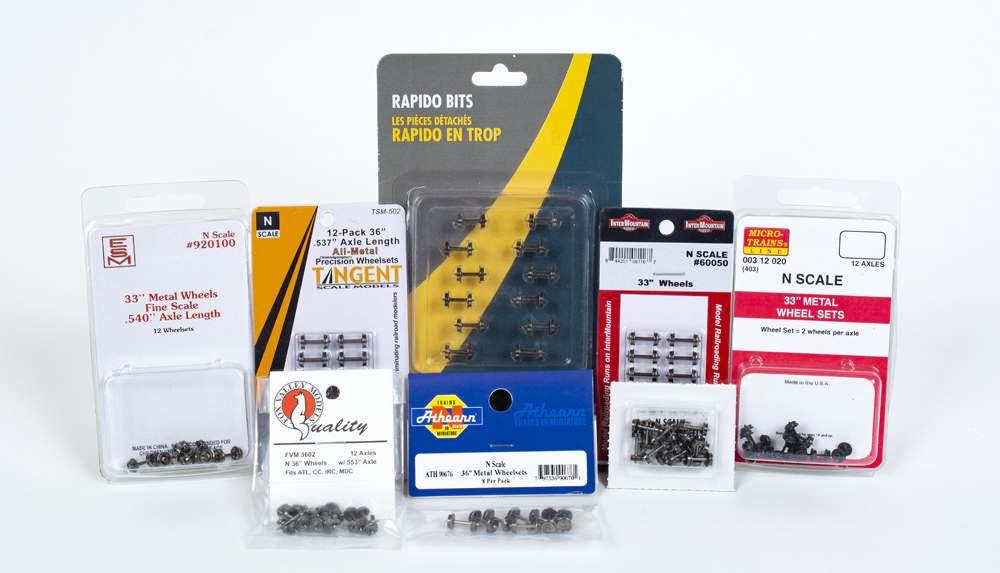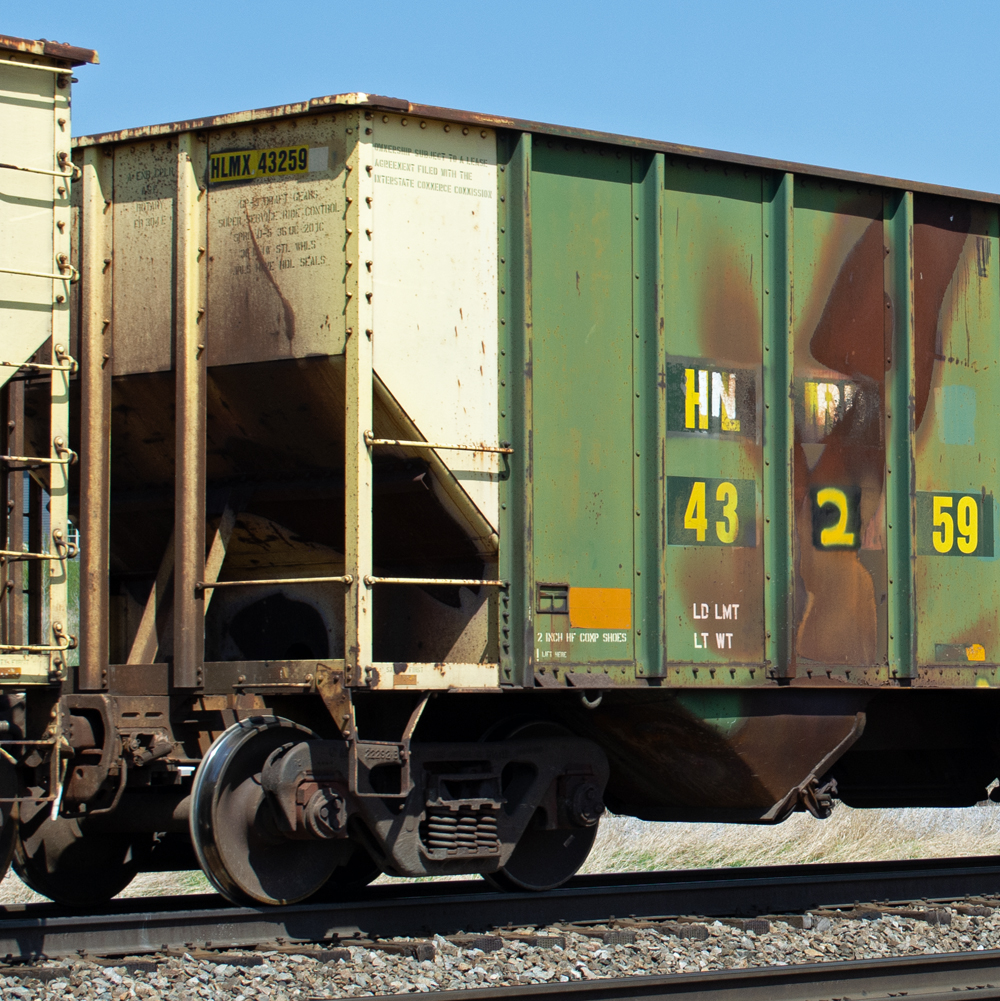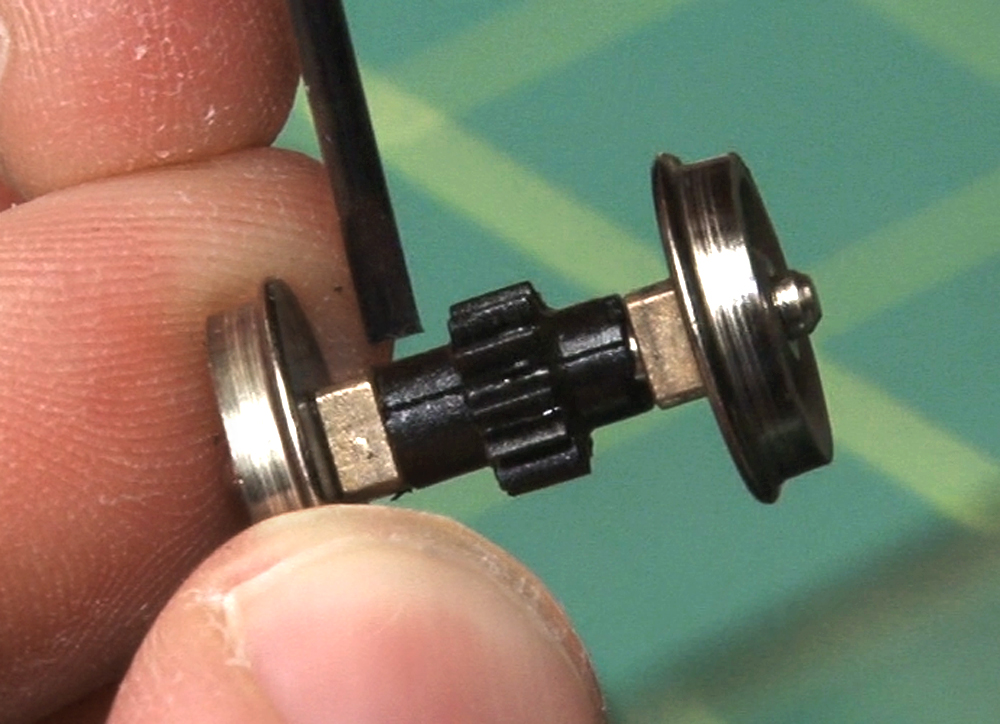There are several types of graffiti. The first is drawn or spray-painted lettering, as seen in fig. 1. This is the easiest type of graffiti to re-create on models.
Large block lettering (fig. 3) is a third style that’s easy to reproduce. This style sometimes takes up the entire side of a railcar.
There are dozens of other styles of graffiti. Prototype photos, books, and the Internet are all valuable resources for graffiti ideas and techniques.
Adding graffiti with paint markers
To simulate spray-painted lettering, I used a white marker with an extra-fine tip. First, I used a sharp pencil to write Nervous. . . Beatz on the side of a smooth-side trash car, as shown in fig. 5. Then I traced over the pencil with the marker, as seen in fig. 6. To make the graffiti stand out, use a color that contrasts the carbody color.
Next, I filled in the outline with a blue medium-tip marker. See fig. 7, opposite. I let the paint dry completely before tracing the outline of the letters with a white extra-fine tip marker. Not only does the white outline make the lettering pop, as shown in fig. 8, it also hides any rough edges left by the medium-tip marker.
Though blue or red will cover almost any color, what about instances where a light color must be used over a dark background? Light colors can still be used successfully, but they require an extra step. After I draw the pencil outline, I fill it in with white. After the paint dries, I color over it, as shown in fig. 9. Outline the letters with a complementary color to hide any imperfections.
Airbrush graffiti
I wanted to replicate the graffiti shown on the full-size car in fig. 10. To do this, I first masked the side of an HO scale auto rack with blue painter’s tape. Then I sprayed the base color, white, with an airbrush.
After I removed the masking tape, I noticed that I needed to do some touch-up work along the edges. Instead of masking the car again, I used a piece of cardboard to keep the black paint off the white, as seen in fig. 12.
If you’re looking to give modern era rolling stock some realism, try adding graffiti. Whether you use the paint markers, an airbrush, or both, these easy techniques will bring your cars into the 21st century.





